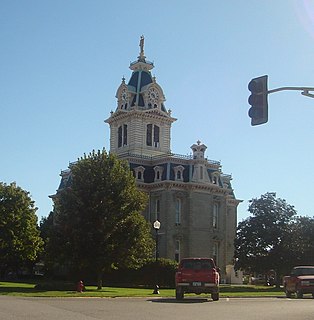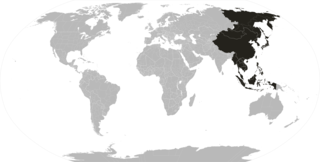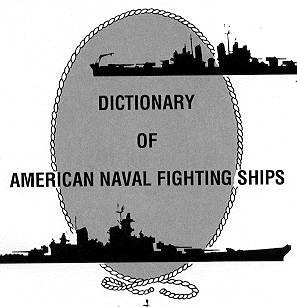
USS Chauncey (DD-667) was a Fletcher-class destroyer of the United States Navy, the third Navy ship named for Commodore Isaac Chauncey (1779–1840).

Frank Friday Fletcher was a United States Navy admiral who served in the late 19th and early 20th centuries. He was awarded the U.S. military's highest decoration, the Medal of Honor, for his actions as commander of navy forces at the Battle of Veracruz, Mexico. The Fletcher-class destroyer, the most produced class of United States Navy destroyers, was named after him. He was also the uncle of Frank Jack Fletcher, another U.S. Navy Admiral who also received the Medal of Honor for actions at Veracruz, and who commanded U.S. naval forces at the battles of Coral Sea and Midway during the Second World War.

Edward Walter Eberle was an admiral in the United States Navy, who served as Superintendent of the United States Naval Academy and the third Chief of Naval Operations.

Albert Gleaves was a decorated admiral in the United States Navy, also notable as a naval historian.

Norman (Nicholas) Scott was a rear admiral in the United States Navy, and was one of only two U.S. Navy admirals killed in action during a surface battle in World War II. Scott posthumously received the Medal of Honor for his actions in the Pacific Theater of World War II.

Vice Admiral Morton Lyndholm Deyo was an officer in the United States Navy, who was a naval gunfire support task force commander of World War II.

James Henry Glennon was a United States Navy officer. He saw action in the Spanish–American War, the Philippine–American War, and World War I.

David Worth Bagley was an admiral in the United States Navy during World War II. He was also the brother of Ensign Worth Bagley, who was the only United States Navy officer killed in action during the Spanish–American War.

Rear Admiral William Freeland Fullam was an officer in the United States Navy during World War I.

Robert Carlisle Giffen was an admiral in the United States Navy.
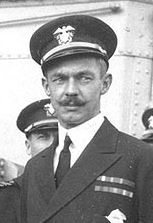
Walter Atlee Edwards was a Lieutenant-Commander in the United States Navy and a recipient of America's highest military decoration - the Medal of Honor.
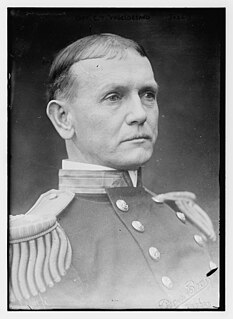
Carl Theodore Vogelgesang was a United States Navy rear admiral and Navy Cross recipient. He was the first U.S. Navy flag officer from California.

Rear Admiral Gilbert Jonathan Rowcliff was an officer of the United States Navy during the First World War and the Second World War. After early service in the Far East he specialised in gunnery, serving in that capacity on many US Navy capital ships. During World War I he served with the US Naval Force sent to join the British Grand Fleet.

Harry Wilbur Hill was an admiral in the United States Navy during World War II.
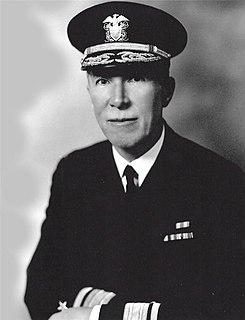
Walter Stratton Anderson was a Vice Admiral of the United States Navy, who served as the Executive officer of USS Arizona in World War I and as Commander Battleships, Battle Force in the Pacific Fleet, and of the Gulf Sea Frontier, during World War II.

Royal Eason Ingersoll was a United States Navy four-star admiral who served as Commander in Chief, U.S. Atlantic Fleet (CINCLANT) from January 1, 1942 to late 1944; Commander, Western Sea Frontier from late 1944 to 1946; and Deputy Commander in Chief, U.S. Fleet/Deputy Chief of Naval Operations (DCOMINCH/DCNO) from late 1944 to late 1945.
Vice Admiral Ferdinand Louis Reichmuth was an officer of the United States Navy who served in World War I and World War II.

Admiral Charles Maynard "Savvy" Cooke Jr., USN, was a United States Navy four star admiral who saw service in World War I and World War II and later served as commander of United States Seventh Fleet (COMSEVENTHFLT) from 1946 to 1947 and commander of U.S. Naval Forces, Western Pacific (COMNAVWESPAC) from 1947 to 1948.

Donald Bradford Beary was a vice admiral of the United States Navy. His career included service in both World War I and World War II and a tour as President of the Naval War College. He commanded a wide variety of ships and organizations, and is particularly noted for his leadership during World War II in establishing and directing a large-scale U.S. Navy training program and for his pioneering and highly successful work as a commander of U.S. Navy underway replenishment forces.



